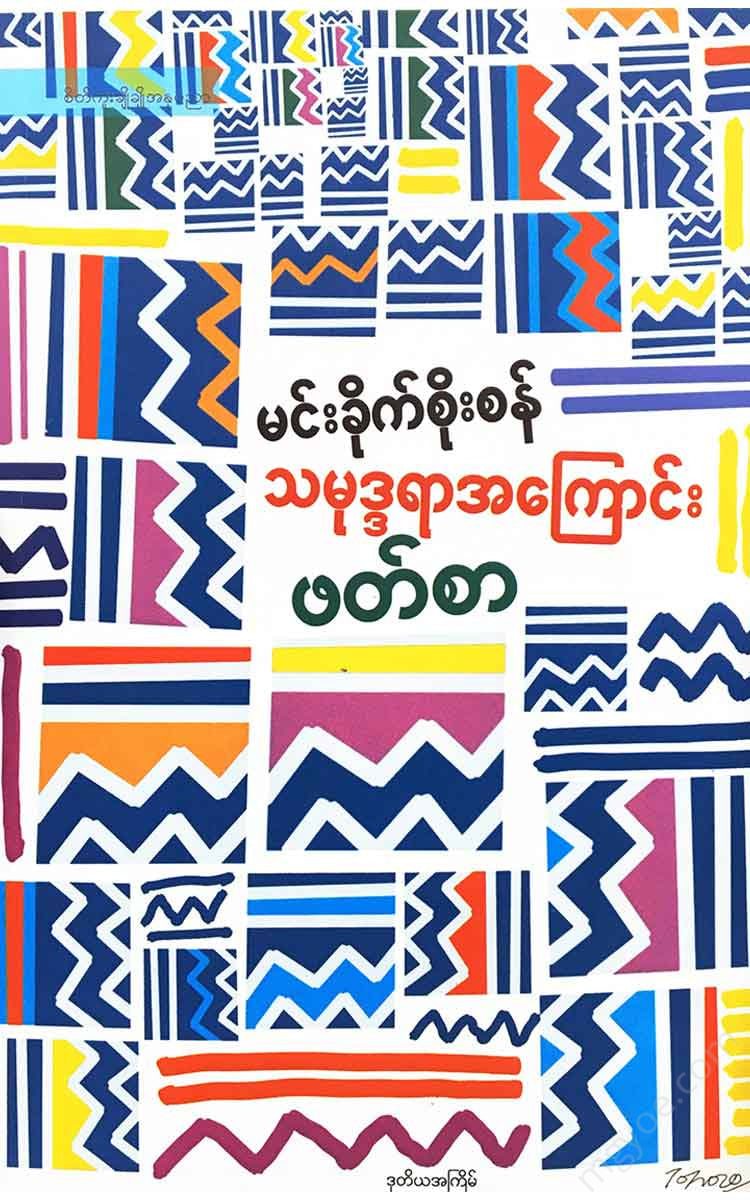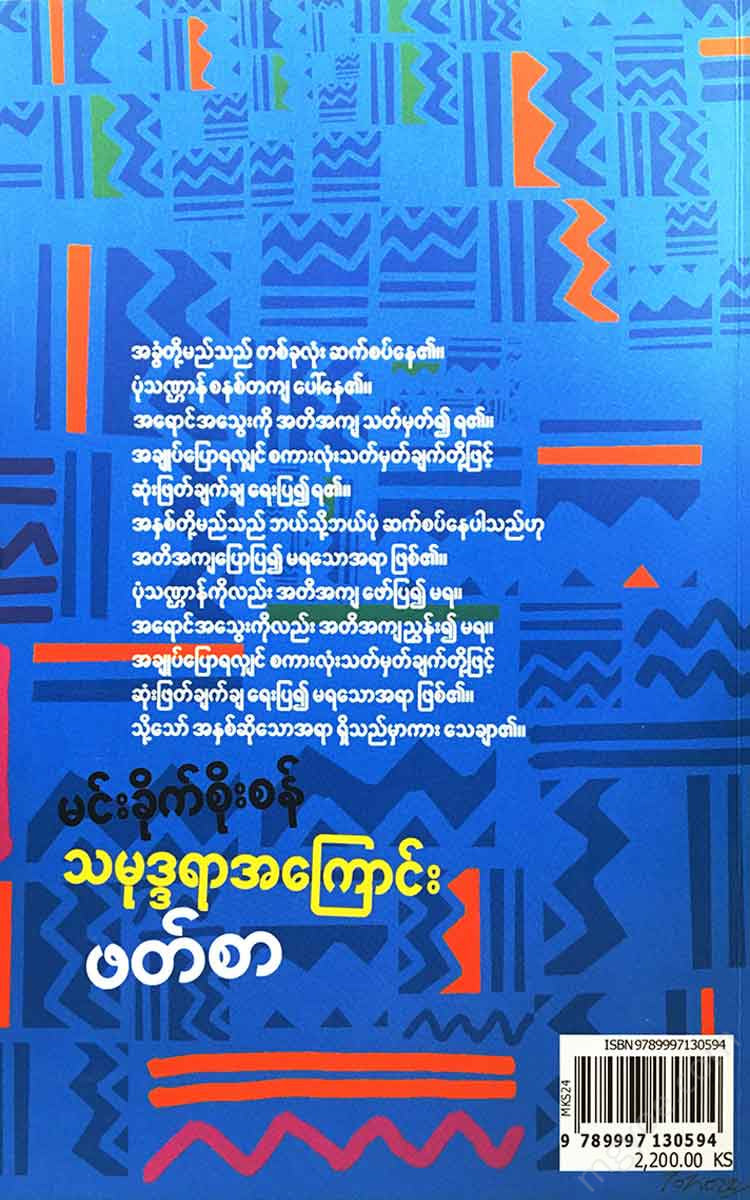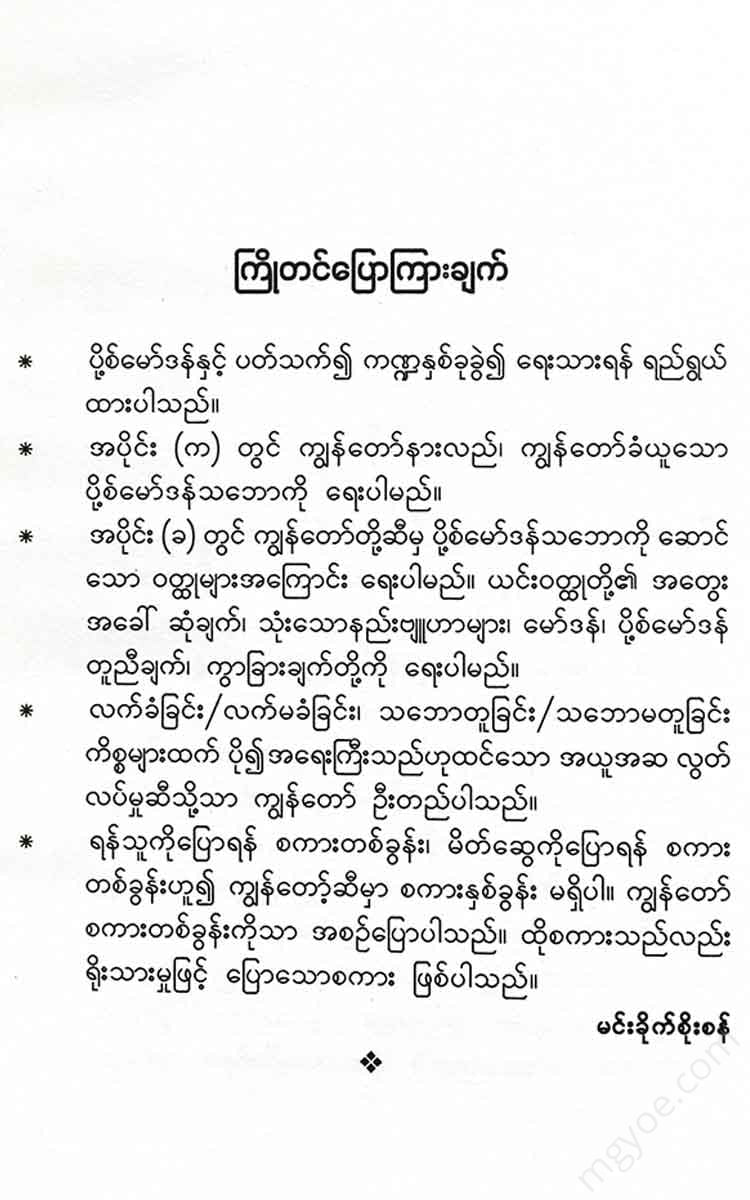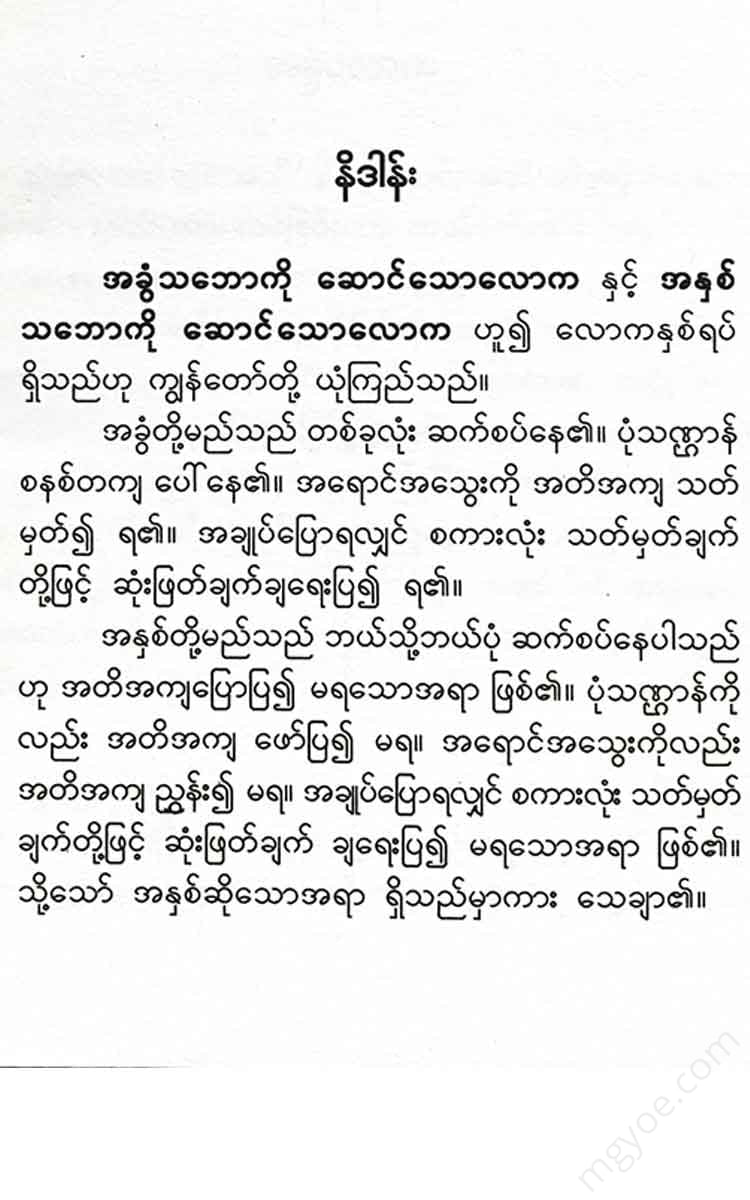စိတ်ကူးချိုချိုစာပေ
Min Khun Soe San - A reading about the ocean
Min Khun Soe San - A reading about the ocean
Couldn't load pickup availability
[ 1 ]
Shell world
1 : 1. In the shell world, the relationship between knowledge/awareness and the “power” that receives, criticizes, refines, reflects, and expresses that knowledge/awareness is very orderly.
For example, if you see a chair, the concept of “chair” becomes the “knowledge” that motivates you. You accept this “knowledge.” Then you think and criticize. “This chair is dirty,” “This chair is out of proportion,” etc. Then you think and reason why it is dirty, because the owner didn’t wash it, why it is out of proportion, because the carpenter is bad, etc., and so on.
1 : 2. Therefore, when that knowledge is expressed, the body of the words, sentences, and texts becomes that “systematic nature.” Let’s refer back to the example above. Suppose a writer writes down the knowledge of seeing that chair.
"This chair is dirty because the owner didn't wash it."
This chair is dirty because the owner didn't wash it.
Perception, perception, perception, perception – according to plan
Disclosure of knowledge -—Organized
1 : 3 . Those who want to maintain the quality of “orderliness” in the expression of this knowledge, in order to ensure that it is always in order, have tried to determine the rules, systems, metaphors, and values, and to determine the grammatical rules and structures, and to classify and name and enact laws regarding the form and content of art objects, and to control the flow and nature of knowledge/consciousness from the art object to the person who experiences it. For example, what “knowledge” does the art object provide? To whom is it provided? How is it provided? What “knowledge” should be provided? What “knowledge” should not be provided?...etc. They have tried to determine precisely. They have also decided.
1 : 4. In making such decisions, they have even started using artisanal and laboratory-style measurements.
What is the nature of the art object? Is the artist able to reflect his or her own thoughts in the art object? If so, can he or she create an image that is visible to the public? What is the truth of that image? How true is it? For whom is it true? Whose side does it stand on?
For example, if you have to
Suppose an artist creates an artwork based on the feeling of a cow.
Are the letters he writes, the paintings he draws, the sculptures he makes similar to cows? If so, to what extent? For what reasons? For whom were they created? For butchers, for farmers, for landowners, etc.
That's why I said above that it's a craftsman-like, laboratory-like analysis.
1 : 5 . In this way, over time, one becomes accustomed to it and one's mental state becomes subject to theories, rules, and artistic traditions (whether subtly or visibly).
Only then did the above rules and theories emerge, expanded, modified, and then the framework was put together, and the systematic historical pattern of art began to emerge.
1 : 6. Throughout history, the framework has been gradually expanded and modified according to the artist's wishes.
How wide can it be expanded?
How quickly can it be expanded (at will)?
1 : 7. Exception
Those who are accustomed to the orderliness of tradition and cannot separate themselves from it will not think much about it.
“Now I have the freedom to create the art I want to create, however I like. We don't consider any boundaries, we create purely with artistic intent and emotion.”
They often say that. They will say that again. However, if you look at the art they create, you will only see things that do not go beyond the framework. Sometimes you will see things that slightly expand on the tradition.
They may be free to create their own. But their senses are tied to the limitations of the frame. They are being influenced by the frame without even realizing it. When you have to carry that weight all your life, you don't even think it's heavy. If that weight is even slightly lightened, you will remember that you are free.
We won't consider the amount of "a little" as a "small amount." We'll think about it in detail.
1 : 8. Let me say it again. How far can these boundaries be expanded? How fast can they be expanded (whenever they want to be expanded). Why do we say “how fast”? The world is changing rapidly. As it is changing, can we understand the essence of the world in time?
1 : 9. In a rapidly changing world, artists observe every “moment”,
What is that “little while”?
The past... the past is something that may have been known or that happened as if it were known.
The future... the future is an endless and uncertain thing.
A moment is a thread that connects the past and the future.
Each of those “moments” is like a single word in a sentence. A sentence composed of these “moments” is a continuous sequence.











